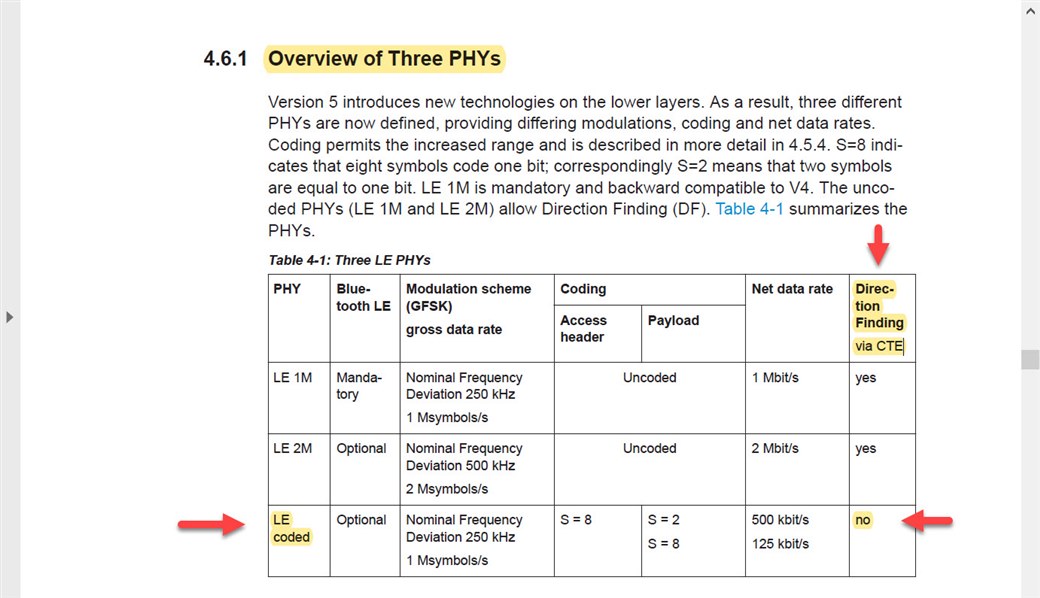According to BLE 5.1 Core Specification Coded PHY and CTE are mutually exclusive. But losing 4xRange to implement Direction Finding is a big loss if, for instance, you need working in a very noisy environment or it happens that you want to implement direction-finding outdoors (in a restricted area though), rather than GPS.
So my question is. Are both features going to be mutually excluding forever (that is, is theoretically impossible for both features to work together), or on the contrary, this could change in the future with some workarounds on the Long Range Specification? Thanks.



